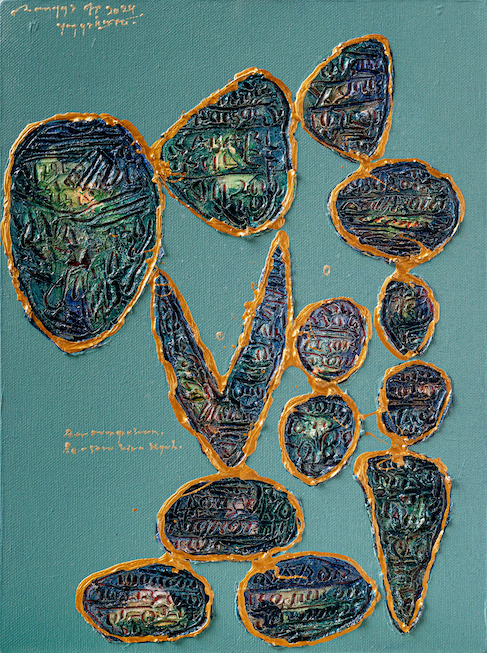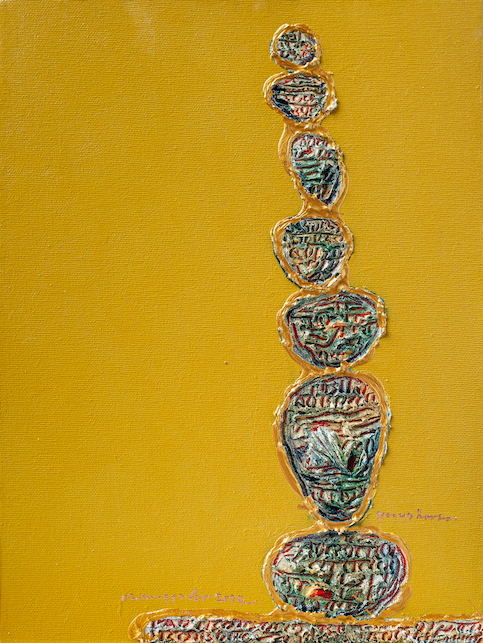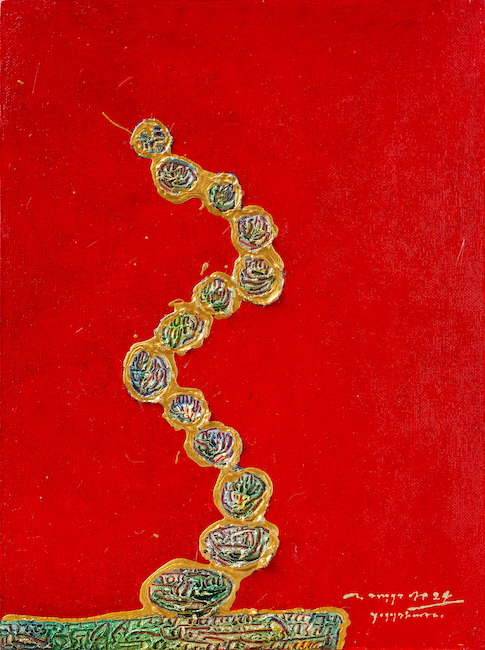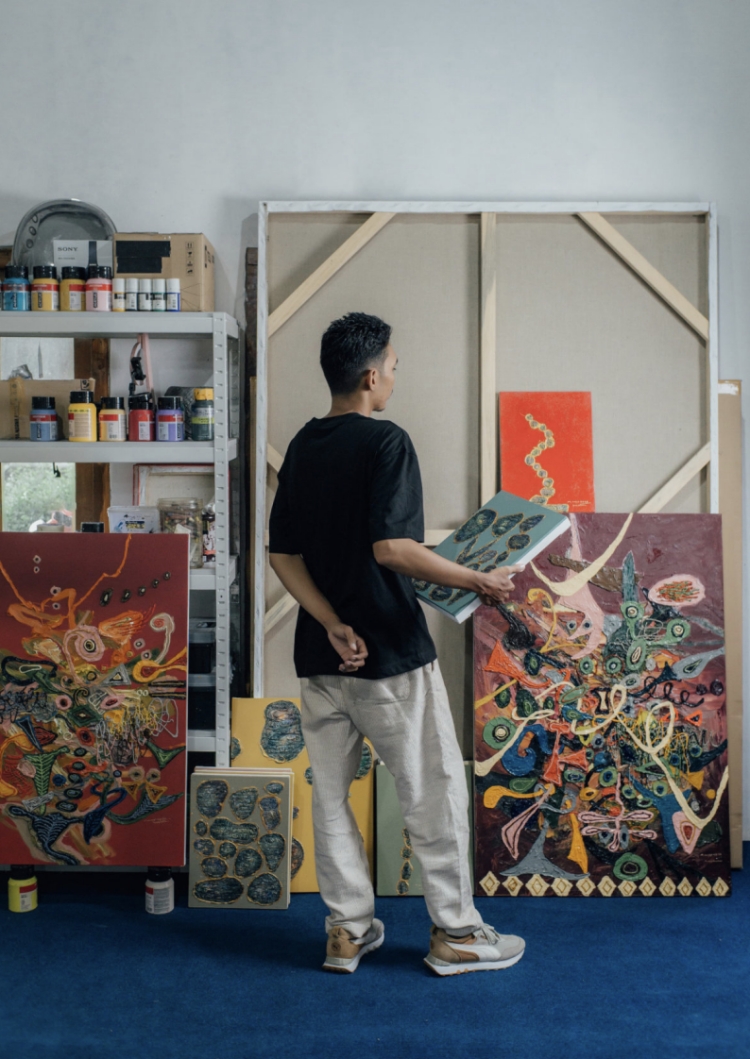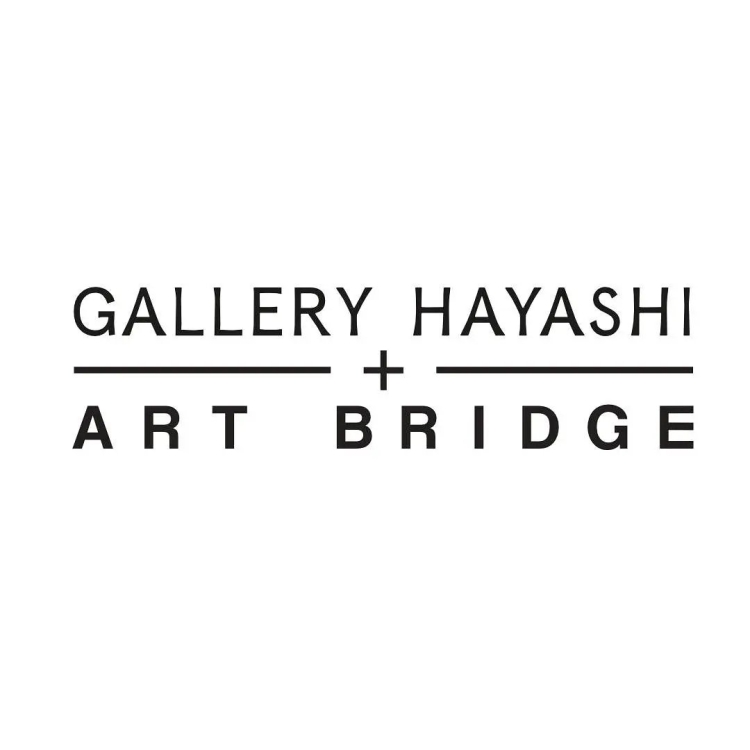GALLERY HAYASHI + ART BRIDGE is delighted to present “Engraving Memories and Grasping The Lights” an exhibition of new paintings by Rangga Aputra.
On view from 10 to 25 May 2024, this show marks the artists’ first solo exhibition in Japan and the second show with the gallery.
In this exhibition, his iconic series of works “Catatan Tekstur” (“Record of texture”) and “Bias Cahaya” (“Colour of Refraction”), which have been exhibited in Switzerland, Italy and Indonesia, will be shown.
Born in Yogyakarta, Indonesia, Rangga Aputra has been fascinated by the act of drawing since childhood and now focuses on the textures that appear on the canvas highlighting his interests in daily life.
The compositions are reminiscent of contemporary artists such as Anselm Kiefer, George Baselitz, Jean-Michel Basquiat, Jean Dubuffet, Antoni Tàpies and Zao Wouki, while the colours reflect Indonesia’s unique spirituality. These elements merge harmoniously, inviting the viewer into an imaginative atmosphere.
Tomi Firdaus, curator of Langgeng Artspace, contributed text for this exhibition.
Nature and all its contents show various phenomena to humanity. Some people ignore them while others spend time observing them. Many natural phenomena have sparked the creation of extraordinary works. Isaac Newton formulated the theory of gravity after observing an apple fall from a tree, Leonardo da Vinci published the book “Codex on The Flight of Birds” after observing and studying how birds fly, “Starry Night,” Vincent van Gogh’s monumental work, was created while he watched the starry night.
Humans, as beings endowed with the ability to think, only need to set aside time to observe and contemplate the natural world around them. In doing so, we do not just study but can also discover something new. A similar approach is applied by Rangga Aputra, an artist, in observing his surroundings. From Rangga’s observations, rocks and light ignite the two series of paintings, namely “Record of texture” and “Colour of refraction.”
For Rangga, painting is an act of contemplation, exploration and self-expression in the creative process. The objects of observation as the basic ideas in his work are not confined to a single form and meaning. This is influenced by intuition and new knowledge that continues to enter, affecting his work over time. What’s more, ‘accidents’ in the creative process also influence the interpretation and final outcome of his work. From this, it should be understood the final result is not the main focus, but rather the process itself is equally important. Through the creative process, Rangga strives to be self-actualized.
In Rangga’s latest works from the “Record of texture” series, rocks are arranged in various rhythms and patterns. As we know, rocks are strong materials that have been widely used in the past to ‘engrave memories’, in the hope they will endure and be studied into the future. Upon careful observation, in the “Record of texture” series there are line patterns resembling letters or numbers on the surface of the rocks. Of course, these letters and numbers cannot be read, understood, or identified. The line patterns in Rangga’s works are asemic text. Rangga uses asemic text to overflow, record and engrave his artistic language in his works. The works become an analog backup memory of his artistic journey. Through the “Record of texture” series, we seem to see chunks of mossy reliefs thousands of years old that contain memories from the past, which are then brought, rearranged, and interpreted on brightly colored machine-made fabric from the present.
When you are outdoors, the sun is shining brightly and your eyes unintentionally look directly at the sun. And then if you move indoors again where the level of light is significantly different, do your eyes see colours like a rainbow? Or irregular shapes? Medically, what you have experienced is called a “halo.” This occurs due to drastic or sudden fluctuations in the brightness of light to the eyes. For Rangga, when he experiences this, he sees beauty. Rangga captures and pours his memories of these colours and irregular shapes onto his canvas.
Unlike the visual elements in “Record of texture”, which use scattered and arranged objects, the works on light, in the “Colour of reflection” series, display bright colours and irregular shapes in a centralized and stacked manner. Another difference between the two series is in the use of painting material. Some years ago, Rangga combined various painting material in his work, such as acrylics, pencils, bitumen, spray paint, charcoal, melted wax and oil paint. Later, Rangga decided to focus on two colouring materials: acrylic paint for “Record of texture” and oil paint for “Colour of reflection”. The use of different material in his two series is designed to demonstrate the potential and characteristics of the material.
This exhibition is not just about seeing what Rangga has created through his contemplation of rocks and light. Nor is it merely about seeing Rangga engrave his memories and capture light on canvas. This fifth solo exhibition is a continuation of the journey of Rangga Aputra’s two series of paintings. I suspect these two series influence each other. This exhibition invites us to pause for a moment from repetitive activities and redirect our gaze to the surrounding world to gain some meaningful and beneficial knowledge, at least for ourselves.
Yogyakarta, 29th March 2024
Tomi Firdaus
EXHIBITED ARTWORKS
EXHIBITION
ARTISTS
VENUE
- URL
- https://g-hayashi-artbridge.com/
- 住所
- 7-7-16, Ginza, Chuo-ku, Tokyo, Japan 104-0061
- Tel
- 03-3571-4291
- 開館時間
- 11:00 — 19:00
- 入館料
- 無料
- 備考
- 日曜休廊(予約制) 最終日 11:00~17:00

